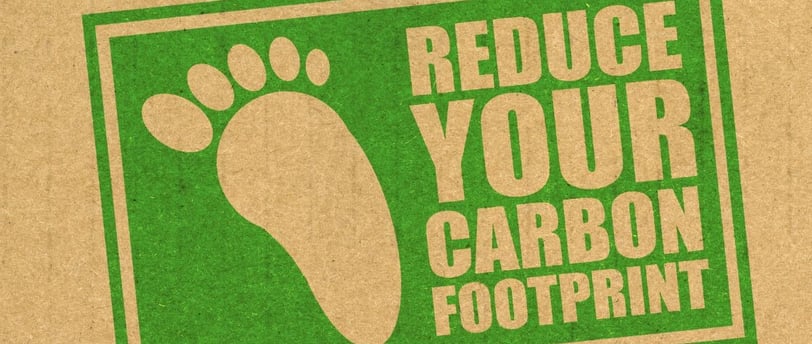Energy-Efficient Home Upgrades: Save Money and Reduce Your Carbon Footprint
Discuss energy-efficient home improvements, such as insulation, LED lighting, and smart thermostats.
SMART HOME INTEGRATION
6/8/20243 min read


In today’s world, energy-efficient home upgrades offer more than just cost savings—they reduce your environmental impact and contribute to a more sustainable future. Whether you’re looking to lower monthly bills or reduce your carbon footprint, here are some of the best upgrades to improve your home’s efficiency and comfort.
Why Make Energy-Efficient Upgrades?
Lower Energy Bills: Reducing energy consumption lowers utility costs and creates long-term savings.
Environmental Impact: Using less energy decreases your home’s carbon emissions, helping to combat climate change.
Improved Comfort: Efficient upgrades, like insulation and modern heating systems, make your home more comfortable year-round.
Increased Home Value: Many buyers value energy-efficient homes, making these upgrades a great investment for future resale.
Key Energy-Efficient Upgrades
1. Improve Insulation
Insulation is the foundation of an energy-efficient home, especially in older homes where heat loss can be significant. Proper insulation keeps warm air inside during winter and cool air in during summer, reducing the strain on heating and cooling systems.
Upgrade Attic Insulation: Since heat rises, adding insulation to your attic can significantly improve overall efficiency.
Seal Gaps and Cracks: Small leaks around windows, doors, and the foundation can lead to drafts. Seal these areas with caulk or weatherstripping to retain indoor temperature.
Wall Insulation: For homes in colder climates, consider blown-in or spray foam insulation in walls for better heat retention.
2. Install Energy-Efficient Windows
Old windows can let heat escape in winter and cool air escape in summer. Installing double-pane or triple-pane energy-efficient windows reduces this loss, boosting insulation and noise reduction.
Double or Triple Glazing: Multi-pane windows provide extra insulation compared to single-pane windows.
Low-E Coatings: Low-emissivity (Low-E) coatings help reflect heat, keeping your home warmer in winter and cooler in summer.
Window Treatments: Use thermal curtains to add a layer of insulation and reduce energy costs further.
3. Switch to LED Lighting
Lighting accounts for a large portion of energy use in many homes. Switching from traditional incandescent bulbs to LED lights is one of the simplest and most cost-effective upgrades.
Longer Lifespan: LEDs last up to 25 times longer than incandescent bulbs, saving money over time.
Lower Energy Consumption: LEDs use about 75% less energy, which can noticeably reduce electricity bills.
Smart Lighting: Combine LEDs with smart lighting systems to control brightness and timing, saving even more energy.
4. Install a Smart Thermostat
Smart thermostats, like those from Nest or ecobee, allow you to control your home’s heating and cooling remotely, automatically adjusting the temperature to save energy when you’re away.
Customized Schedules: Program heating and cooling to match your daily routine, so you’re not wasting energy when you’re not home.
Energy Usage Insights: Many smart thermostats track your energy use and offer tips for further savings.
Remote Access: Control your thermostat from your phone or smart device, making it easy to adjust settings from anywhere.
5. Upgrade Appliances to Energy Star Certified Models
Energy Star appliances meet high standards for efficiency, using less water and electricity while delivering the same performance.
Energy Star Refrigerators: Newer models use less energy and often have advanced insulation and compressors for better performance.
Efficient Washers and Dryers: Energy Star washers use up to 40% less water, while dryers with moisture sensors avoid overdrying.
Dishwashers: Efficient dishwashers use less water and energy per cycle, reducing both utility costs and environmental impact.
6. Add Solar Panels
Solar panels are an investment, but they offer significant long-term savings by generating clean, renewable energy for your home. With government incentives and tax credits, solar is becoming more accessible for homeowners.
Reduce or Eliminate Electricity Bills: Generate your own power, especially in sunny climates, which can significantly reduce your reliance on the grid.
Increase Home Value: Solar panels are attractive to eco-conscious buyers, often raising property values.
Battery Storage Options: Pair your solar system with a battery for energy storage, allowing you to store excess power for use during peak hours or outages.
7. Use Efficient Water Heating Solutions
Water heating is one of the biggest energy users in most homes. Switching to energy-efficient solutions can make a big difference.
Tankless Water Heaters: These heat water on demand, eliminating the need to keep a tank of water hot all day.
Heat Pump Water Heaters: Use up to 60% less electricity than standard electric water heaters by pulling heat from the air.
Water Heater Insulation: Adding a water heater blanket can improve efficiency by reducing heat loss.
Final Thoughts
Upgrading your home with energy-efficient improvements not only saves money but also benefits the environment. From simple swaps like LED lighting to larger investments like solar panels, these changes can make a big difference in your home’s comfort and eco-friendliness. For Indianapolis homeowners interested in energy-efficient home upgrades, our handyman team can help with installation, maintenance, and more.
Service hours:
Mon to Fri
9:00 AM - 6:00 PM
Sat to Sun
10:00 AM - 5:00 PM
To schedule an appointment,
give us a call or leave your request
Copyright© 2024 • All rights reserved.


